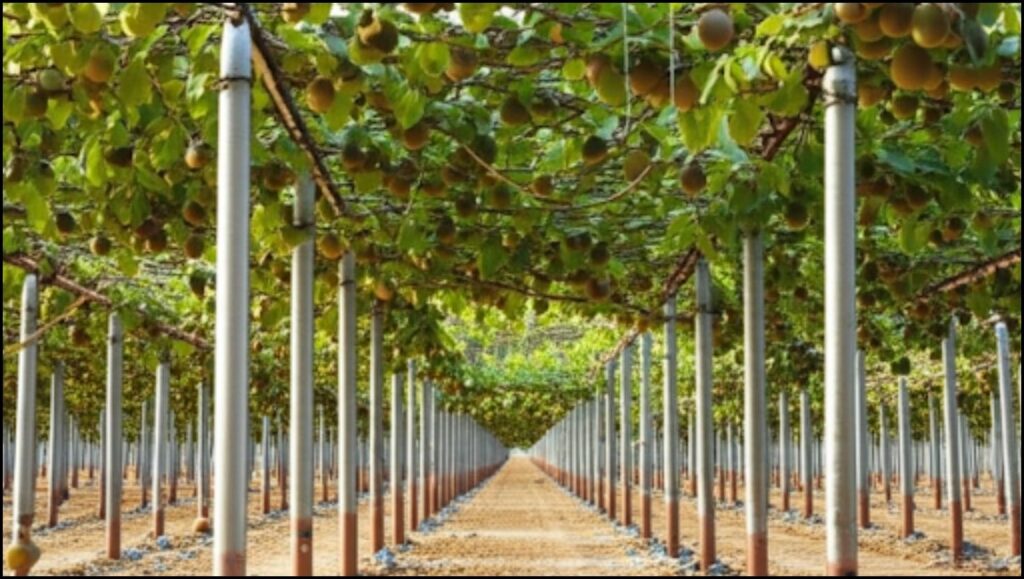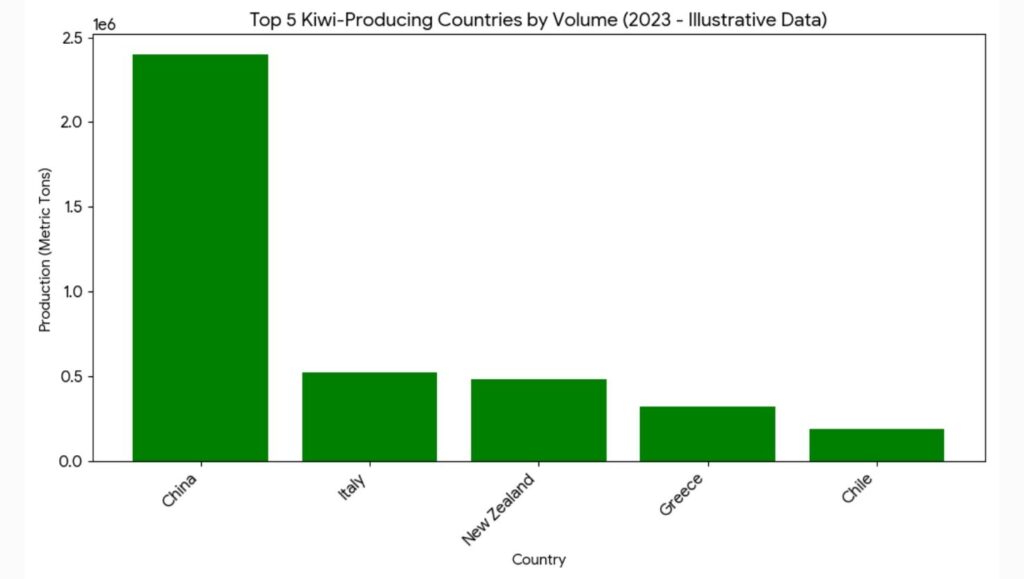Often perceived as a simple fruit, global kiwi farming encompasses a complex interplay of environmental factors, economic dynamics, and horticultural innovation. What appears as a straightforward agricultural pursuit is, in fact, a deeply nuanced industry grappling with climate change, evolving consumer preferences, and the silent revolution of new varietals.

The Surprising Origins and Global Expansion of Kiwi
The kiwi fruit, botanically known as Actinidia deliciosa, traces its origins not to New Zealand, as commonly believed, but to the forests of central and eastern China. For centuries, it was primarily gathered from the wild and used for medicinal purposes, known by names such as “míhóutáo” (macaque peach). Its commercial journey began in the early 20th century when seeds were introduced to New Zealand. There, it was rebranded from its original “Chinese gooseberry” moniker in 1959 to “kiwi fruit,” a nod to New Zealand’s national bird, according to the Royal Horticultural Society. This strategic re-naming significantly boosted its global appeal, transforming it into a prominent export for New Zealand.
Today, while New Zealand remains a leading exporter, the landscape of global kiwi production is far more diverse. China is, by a significant margin, the largest producer of kiwi fruit, accounting for over 50% of global production, with a substantial volume of 2.4 million metric tons in 2023, as reported by FAOSTAT. Italy, Greece, and Chile have also emerged as major players, each leveraging unique climatic advantages and trade agreements to establish their market presence. For instance, Chile’s counter-seasonal production allows it to supply fresh kiwi to northern hemisphere markets during their off-season, offering a critical supply chain advantage.
Climate Change and Cultivation Challenges
Kiwi fruit cultivation is highly sensitive to specific climatic conditions, thriving in temperate zones with mild winters and frost-free springs. This inherent sensitivity makes kiwi farming particularly vulnerable to the effects of global climate change. Alterations in mean temperatures, shifts in minimum and maximum temperature thresholds, and unpredictable rainfall patterns pose significant challenges to growers worldwide. Extreme weather events, such as unseasonal frosts or prolonged heatwaves, can severely impact yields and fruit quality, as highlighted in a comprehensive review published in MDPI.
Another critical challenge for kiwi farming is pest and disease management. The bacterial disease Pseudomonas syringae pv. actinidiae (PSA), for example, has caused substantial economic losses in key producing regions, including New Zealand and Italy. This emphasizes the continuous need for robust integrated pest management (IPM) strategies, which combine biological controls, cultural practices, and targeted applications of approved treatments to mitigate environmental impact.

The Economic Equation: High Investment, Promising Returns
Establishing a kiwi orchard represents a substantial initial investment. This includes costs for land preparation, setting up robust trellis systems, purchasing planting materials (often a mix of male and female vines for pollination), and developing irrigation infrastructure. For instance, studies on kiwi cultivation in India’s Arunachal Pradesh reveal establishment costs per hectare averaging around INR 281,567, or approximately USD 3,375, as noted in a report by New Delhi Publishers. The time from planting to the first significant harvest can also range from three to seven years, depending on the variety and growing conditions, requiring patience and sustained capital.
Despite these upfront costs and the time investment, kiwi cultivation can be highly profitable. In regions with suitable climates and established markets, annual returns can be significant. Research on thermos-type greenhouses for kiwi cultivation in Uzbekistan, for example, demonstrated profitability rates reaching over 300% in recent years, despite infrastructure challenges, according to a study in the Central Asian Journal of Innovations in Technology, Management and Finance. This robust economic viability drives continued interest and expansion in various countries.
Innovations Driving Sustainable Kiwi Farming
The kiwi fruit market is witnessing significant innovation, particularly in developing new varieties and adopting sustainable farming practices. Plant breeders are consistently working to create cultivars that are more resilient to changing climates, resistant to diseases like PSA, and offer enhanced nutritional profiles or sensory attributes. For instance, new red-fleshed and yellow-fleshed kiwi cultivars, such as ‘HFR18’ and ‘HFY01’ from Sichuan, China, boast improved sweetness, higher vitamin C content, and strong resistance to bacterial diseases, as reported in Acta Horticulture. The U.S. Department of Agriculture (USDA) has also developed cold-hardy varieties like ‘Tango’ and ‘Hombre,’ enabling kiwi cultivation in previously unsuitable cooler climates.
Sustainable practices are also gaining traction. Farmers are increasingly focusing on optimizing irrigation to prevent overwatering, which can deplete groundwater and reduce fruit quality. Improved nitrogen-use efficiency in fertilizers, achieved through precise application based on soil analysis, helps reduce environmental pollution and enhances fruit quality, according to research in MDPI. The integration of organic and chemical fertilizers is another approach being explored to maintain soil health and improve yields while minimizing ecological impact.
Evolving Consumer Preferences and Market Dynamics
Consumer demand for kiwi fruit continues to rise globally, driven by increasing health consciousness and a preference for nutrient-dense foods. Kiwis are renowned for their high vitamin C content, dietary fiber, and antioxidants, making them a popular choice among health-conscious consumers. This growing demand, particularly in Asia, North America, and Europe, is fueling increased production and export activities from major kiwi exporting countries.
A notable trend in the global market is the rising demand for yellow or gold-fleshed kiwi varieties, such as Zespri’s SunGold. These varieties often offer a sweeter taste and longer shelf life, appealing to a broader consumer base, especially in Asian markets. Free Trade Agreements (FTAs) also play a crucial role, providing significant advantages to countries like New Zealand and Chile through reduced tariffs and streamlined logistics, further boosting their competitive edge in international trade.
The Road Ahead for Kiwi Cultivation
The global kiwi industry is on a path of continued growth, projected to reach a market size of USD 12.38 billion by 2030, with a compound annual growth rate (CAGR) of 4.6% during 2025-2030, as per Mordor Intelligence. This growth will be underpinned by ongoing advancements in agricultural technology, including precision farming techniques and further development of disease-resistant and climate-adaptive cultivars. Challenges related to climate variability and pest outbreaks will necessitate continued investment in research and development, alongside international collaboration, to ensure the long-term sustainability and economic viability of global kiwi farming.
